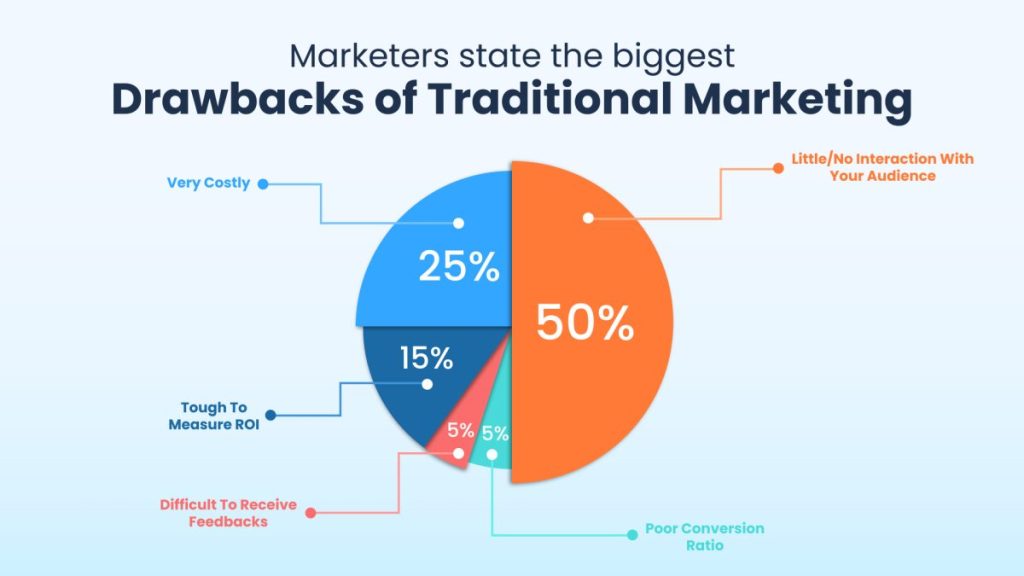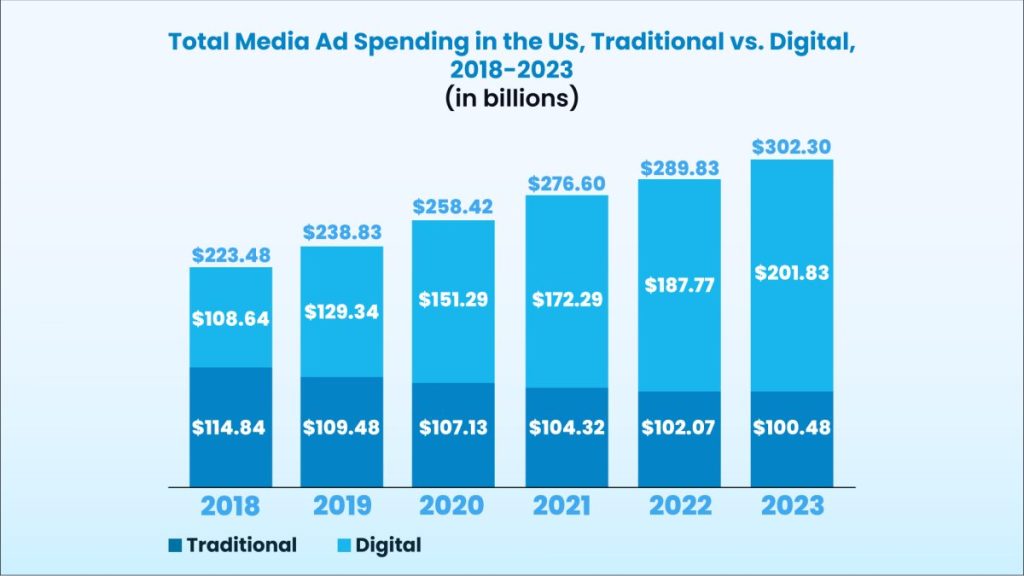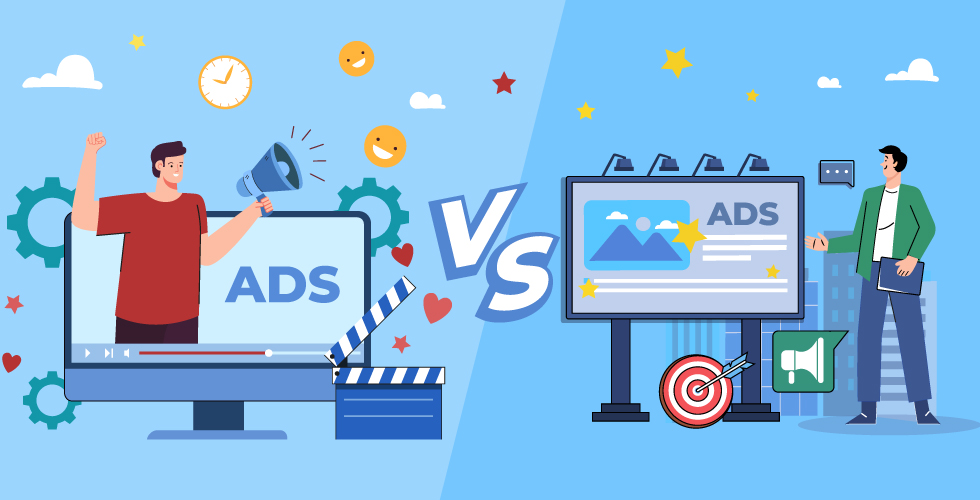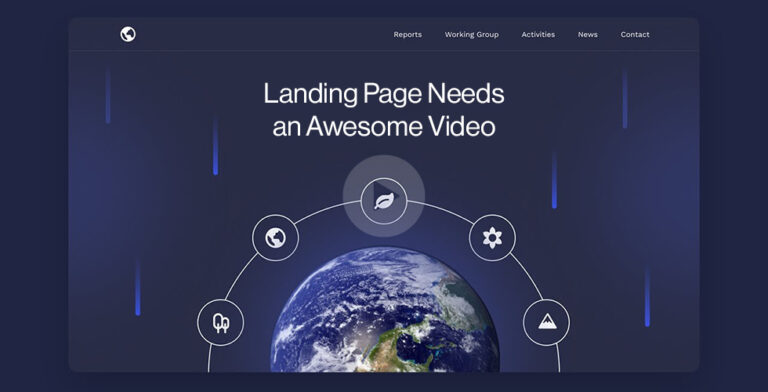Nowadays, the global business scenario has become highly competitive. To capture the consumer’s attention and drive better sales to the business, effective advertisement plays a vital role. Since the inception of advertisement, it has evolved in many ways due to the advancement of technology. Now, businesses have a multitude of options to choose from when it comes to products and services. Along with the traditional marketing approach like advertisement on billboards, banners, television, word of mouth, etc, businesses are now following the animated advertising approach as well. In this article, we will explore the merits of both methods and drive into the question of which one is better for your business. Throughout the discussion, we’ll primarily focus on animated advertisements – which have become a prominent tool in modern marketing strategy. It has been proven that, by comparing side by side with traditional advertisements, businesses can create captivating and visually appealing campaigns with animated advertising, that is able to leave a lasting expression on the customers.
Understanding The Animated Advertisements
Animated content means a type of content that is made up using animated techniques such as computer-generated content, motion graphics, or hand-drawn animation. Animation advertisement refers to using animated content for promotional activity that will promote products or services of the company and drive sales. Moreover, these advertisements bring static visuals to life through movement and create a dynamic and engaging experience for audiences. Animated advertisements have a lot of benefits if you use them for your business promotional campaign –
- Customer attracting potential: Animated advertisements have a higher likelihood of capturing viewers’ attention than static or traditional advertisements. The motion, vibrant colors, and visual effects used in animation can effectively stand out amidst the visual clutter and grab the viewer’s eye.
- Diverse storytelling capabilities: Animation offers a versatile medium for storytelling. It allows businesses to create characters, narratives, and scenarios that resonate with the target audience. Through animation, complex concepts or brands’ messages can be simplified and communicated in a visually appealing and entertaining manner.
- Make complex ideas simple: Animated advertisements excel in simplifying complex information or concepts. Through the use of visuals, animations can break down intricate processes, explain product features, or showcase abstract ideas in a concise and easy-to-understand format. This makes them particularly effective for industries with technical or abstract offerings.
- Platform versatility: Animated advertisements can be adapted and optimized for various platforms, including television, social media, websites, and mobile applications. They can be easily resized or reformatted without compromising the quality ensuring a consistent brand experience across different channels.
- Inexpensive: The cost of producing animated video material is much lower than real-life video. Because there is no need to spend money on casting, shooting, transportation, etc. An animated video can be created with a high-configuration computer. Again this high-configuration computer is also a one-time investment. And nowadays animation is in high demand so many people have taken this skill professionally. So finding an animator is not a very difficult task. Hence, the cost of producing animation videos is much lower than traditional advertising material.
According to Tubular Insights, animated advertising videos have converted 64% of people into customers. So, you can see, by harnessing the attention-grabbing power and simplified storytelling process of animated advertisement, businesses can easily deliver their brand message and drive desired outcomes.
Why Traditional Advertising Is Falling Behind?
Traditional advertisements such as print ads, billboards, radio spots, and television commercials, have long been a staple in the marketing industry. These forms of advertising have played a significant role in reaching audiences and building brand awareness. However, in recent days, traditional advertisements are facing certain limitations when compared to animated advertisements in digital marketing.
One of those limitations is – traditional advertisements are now incapable of effectively engaging to modern audiences with short attention spans. With the rise of smartphones, tablets, and on-demand content, consumers now have more control over what they choose to see and when they see it. Traditional advertisements, particularly those aired on television or displayed on billboards, often struggle to capture and maintain viewers’ attention amidst the constant distraction of the digital world.
Moreover, traditional advertising methods often struggle to convey the right message in a simplified way. With print ads or billboards, businesses have limited space to communicate their brand story or showcase the features of their products or services. Traditional advertisements often rely on concise slogans or taglines, which may not provide sufficient information or context for today’s discerning consumers who seek detailed and immersive experiences.

Additionally, the tangibility and physical presence that traditional advertisements offer may not be as effective in the digital marketing landscape. While billboards and physical advertisements can create a sense of brand recognition and familiarity, they lack the interactive elements that animated advertisements can offer. In the age of social media and interactive online experiences, consumers are increasingly drawn to engaging and interactive content that allows them to actively participate in the brand narrative.
Another challenge for traditional advertisements is the difficulty in measuring their effectiveness and return on investment (ROI). Unlike digital marketing, where analytics and tracking tools provide insights into reach, engagement, and conversion rates, traditional advertisements often rely on estimates and assumptions. It can be challenging to determine the precise impact and effectiveness of traditional advertisements, making it harder for businesses to optimize their marketing strategies and allocate their resources efficiently.
Comparing Animated vs Traditional Advertisements
When considering the choice between animated advertisements and traditional advertisements, it is important to evaluate their key differences and understand how they align with your business goals and target audience. Here is a fact-driven comparison between two different advertising approaches.
| Considering Factors | Animated Advertisements | Traditional Advertisements |
| Visual Appeal and Attention-Grabbing Potential | Utilize dynamic visuals, vibrant colors, and engaging animations to capture viewers’ attention. | Rely on static images, text, and traditional media formats such as print, billboards, or television commercials. |
| Can create visually stunning and eye-catching advertisements that stand out among competitors. | May evoke a sense of familiarity and nostalgia but might struggle to compete for attention in a visually saturated environment. | |
| Storytelling and Message Delivery | Offer more creative freedom to tell a compelling story through characters, narratives, and imaginative visuals. | Generally have limited time or space to convey a message. |
| Can convey complex messages, emotions, and concepts effectively, allowing for a deeper connection with the audience. | Often rely on concise and straightforward messaging, focusing on key selling points or slogans. | |
| Audience Engagement and Interactivity | Provide opportunities for interactive elements, such as clickable buttons or animated sequences triggered by user actions. | Offer less scope for direct audience engagement and interactivity. |
| Can engage the audience in a more dynamic and immersive way, fostering greater interactivity and participation. | Audience interaction is limited to passive consumption of the advertisement content. | |
| Distribution Channels and Reach | Can be easily distributed through various digital channels, including websites, social media platforms, mobile apps, and video-sharing platforms. | Suitable for traditional media platforms such as television, radio, newspapers, magazines, and physical billboards. |
| Benefit from the potential to reach a wider online audience and leverage the viral nature of digital content sharing. | Target a specific geographic location or demographic, depending on the chosen medium. | |
| Cost and Production Considerations | Generally involve higher production costs due to the need for animation design, scripting, voice-over, and editing. | Costs vary depending on the chosen medium, production quality, and airtime slots. |
| However, advancements in technology have made animation production more accessible and cost-effective than in the past. | Traditional advertisements might involve expenses related to print materials, TV/radio production, or billboard space rental. |
It’s important to evaluate these factors in the context of your business objectives, target audience preferences, and available resources. Consider conducting market research, analyzing your competitors’ strategies, and running small-scale tests to gauge the effectiveness of both animated and traditional advertisements for your specific business niche.

What Advertisement Approach Should You Take For Business
Choosing the right advertising approach for your business can seem daunting, but it doesn’t have to be. Here are a few simple steps to help you to make an informed decision:
- Understand Your Business Goals: Start by clarifying your objectives. What do you want to achieve through advertising? Increase brand awareness, drive sales, or promote a new product? Knowing your goals will guide your advertising strategy.
- Know Your Target Audience: Who are your customers? Understand their demographics, interests, and preferences. This will help you choose an approach that resonates with them and captures their attention.
- Consider Your Budget: Determine how much you can allocate to advertising. Animated advertisements may require higher production costs, while traditional advertisements might have expenses like print materials or airtime. Find a balance that suits your budget.
- Assess Your Product Or Service: Consider the nature of what you’re offering. Does it lend itself better to visually engaging animations or can it be effectively promoted through traditional means? Align your advertising approach with the strengths of your product or service.
- Explore Different Platforms: Research the platforms and channels where your target audience spends their time. Digital platforms offer wider reach and interactivity, while traditional media can target specific geographic areas. Choose the platforms that best suit your audience.
- Test & Measure: Conduct small-scale tests to gauge the effectiveness of different advertising approaches. Monitor key metrics like engagement, conversion rates, and return on investment. Use this data to refine your strategy.
Remember, there is no one-size-fits-all approach. Every business is unique, and what works for one may not work for another. Take the time to evaluate your options, consider your audience, and align your advertising approach with your business goals.
Your Message
With Animation

Transform Your Message With Animation

Wrapping Up
Considering the factors mentioned above, animated advertisements emerge as a powerful choice for businesses. With their captivating visuals, storytelling capabilities, audience engagement, and wide distribution channels, animated advertisements have the potential to make a significant impact on your target audience. If you’re looking to harness the benefits of animated advertisements for your business, animation studios are offering expert animation services to help bring your ideas to life and create compelling advertisements that resonate with your audience.







